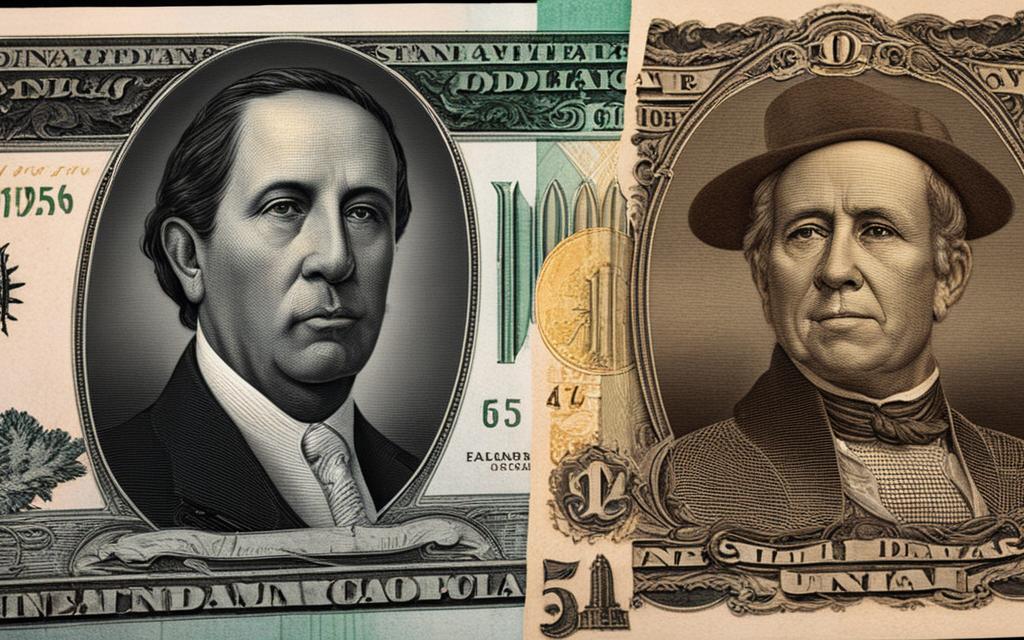Welcome to our Panama Currency Guide, where we explore the unique monetary system of Panama. In this article, we will delve into the Panamanian balboa, its coexistence with the U.S. dollar, the stability of Panama’s currency, acceptance of credit cards and traveler’s checks, and important considerations for handling money in Panama.
In Panama, the official currency is the Panamanian balboa, a currency that exists solely in coin form. However, Panama has used the United States dollar as its currency since 1904, making it the country that has been tied to the U.S. dollar the longest. It’s interesting to note that Panama did briefly print its own paper currency in 1941.
Key Takeaways:
- Panama uses the U.S. dollar as its official currency. The Panamanian balboa, tied to the U.S. dollar at a one-to-one exchange rate, only exists in coin form and is produced at U.S. mints in Philadelphia and Denver.
- The coexistence of the Panamanian balboa and the U.S. dollar is unique to Panama. Both currencies are accepted as legal tender and used interchangeably.
- The stability of Panama’s financial system is attributed to its use of the U.S. dollar, which helps maintain low inflation rates.
- Credit cards such as Visa, American Express, and MasterCard are widely accepted in major cities, while traveler’s checks may be accepted in larger hotels.
- When visiting Panama, it is advisable to carry cash in smaller towns and rural areas, as credit card acceptance may be limited.
Coexistence of Balboa and U.S. Dollar
In Panama, the coexistence of the Panamanian balboa and the U.S. dollar is a unique feature of the country’s currency system. Both currencies are used interchangeably and accepted as legal tender. This means that prices and transactions in Panama can be quoted in both balboas and U.S. dollars.
The exchange rate between the balboa and the U.S. dollar is fixed at a one-to-one ratio. This means that one balboa is equivalent to one U.S. dollar. The stability of this exchange rate ensures a reliable and predictable monetary system in Panama.
“The coexistence of the Panamanian balboa and the U.S. dollar provides convenience for both locals and visitors, as they can easily understand and handle the currency in everyday transactions.”
The coexistence of the Panamanian balboa and the U.S. dollar
| Panamanian Balboa | U.S. Dollar |
|---|---|
| Used interchangeably with U.S. dollar | Used as primary currency |
| Exists only in coin form | Exists as paper currency and coins |
| Produced at U.S. mints in Philadelphia and Denver | Produced by the United States Bureau of Engraving and Printing |
Stability of Panama Currency
Panama’s use of the U.S. dollar as its official currency has been instrumental in maintaining the stability of the country’s financial system. The U.S. dollar is a widely recognized and stable currency, ensuring a strong foundation for Panama’s economy.
One of the key advantages of adopting the U.S. dollar is the low inflation rates it has helped to maintain in Panama. Over the past 25 years, inflation in Panama has consistently averaged less than 3%, which is significantly lower than the average inflation rate experienced in the United States.
This stability in the currency has had a positive impact on Panama’s economic growth. The consistent and reliable value of the U.S. dollar has attracted foreign investment to the country, further bolstering its financial stability.
Overall, the stability of Panama’s currency, supported by the adoption of the U.S. dollar, has played a vital role in ensuring a robust and thriving economy.
| Benefits of Panama’s Currency Stability | Impact on Panama’s Economy |
|---|---|
| Low inflation rates | Attracts foreign investment |
| Stable financial system | Enhances economic growth |
| Reliable value of the U.S. dollar | Boosts investor confidence |
Acceptance of Credit Cards and Traveler’s Checks
When it comes to navigating the financial landscape in Panama, it’s essential to understand the acceptance of credit cards and traveler’s checks. This knowledge can help ensure smooth transactions and convenient access to funds during your visit.
Accepted Credit Cards
- Visa
- American Express
- MasterCard
Note: In major cities in Panama, these major credit cards are widely accepted, making it convenient for visitors to use their preferred payment methods. However, it’s important to note that in smaller towns, credit card acceptance may be less reliable. It’s advisable to carry some cash as a backup in these areas.
Traveler’s Checks
Traveler’s checks can be a secure way to carry money while traveling, but their acceptance in Panama is more limited. Larger hotels may accept traveler’s checks, but outside of banks, it can be challenging to cash them. If you plan on using traveler’s checks, it’s recommended to use those issued by American Express, as they are more widely accepted.
Note: To avoid any potential difficulties, it’s always a good idea to have an alternative form of payment, such as a credit card or cash, readily available.
Bank Machines
One convenient option for accessing cash in Panama is through bank machines, also known as ATMs. Even in smaller communities, there is an abundance of bank machines available. These machines allow you to withdraw up to US$500 per day, ensuring that you have access to the funds you need for your daily expenses.
Note: It’s important to keep in mind that certain fees may apply when using bank machines, such as foreign transaction fees and ATM withdrawal fees. Be sure to check with your bank beforehand to understand the charges associated with using your card abroad.

Considerations and Tips
When visiting Panama, it is important to be aware of some considerations and tips regarding money. Taking these into account will ensure a smooth financial experience during your trip. Here are some key points to keep in mind:
- Accepted Coins: U.S. coins are widely accepted in Panama, so you won’t have any trouble using them for transactions.
- Avoid Canadian Coins: It is recommended not to use Canadian coins in transactions as they may not be accepted.
- Real Estate Prices: If you’re interested in real estate in Panama, particularly in popular areas for foreign retirees and snowbirds, be aware that the prices have experienced significant inflation. It’s advisable to do thorough research and consult with local experts before making any decisions.
- Carry Cash: While credit cards are generally accepted in Panama, it’s advisable to carry some cash, especially when visiting smaller towns and rural areas. Some establishments may only accept cash, so having local currency on hand can be beneficial.
- Bank Machine Safety: When using bank machines, exercise caution and be aware of your surroundings. Keep an eye on your card during the transaction and promptly retrieve it once the transaction is complete.
By keeping these considerations in mind, you can navigate the currency landscape in Panama and make the most out of your visit.

Conclusion
In conclusion, Panama’s currency system is unique, with the Panamanian balboa and the U.S. dollar coexisting as legal tender. This arrangement has provided stability to Panama’s economy and attracts foreign investment. The one-to-one exchange rate between the balboa and the U.S. dollar ensures simplicity in transactions.
While credit cards are widely accepted, it is advisable to carry cash in some situations. Panama’s monetary unit provides a sense of familiarity and convenience for visitors from the United States. The use of the U.S. dollar as the official currency has contributed to the stability of Panama’s financial system, with low inflation rates and a robust economy.
From bustling cities to rural areas, Panama offers a comfortable and reliable currency system. Whether you are exploring Panama’s vibrant city life or enjoying the natural beauty of its countryside, the Panamanian balboa and U.S. dollar provide a seamless payment experience for both locals and tourists alike.



